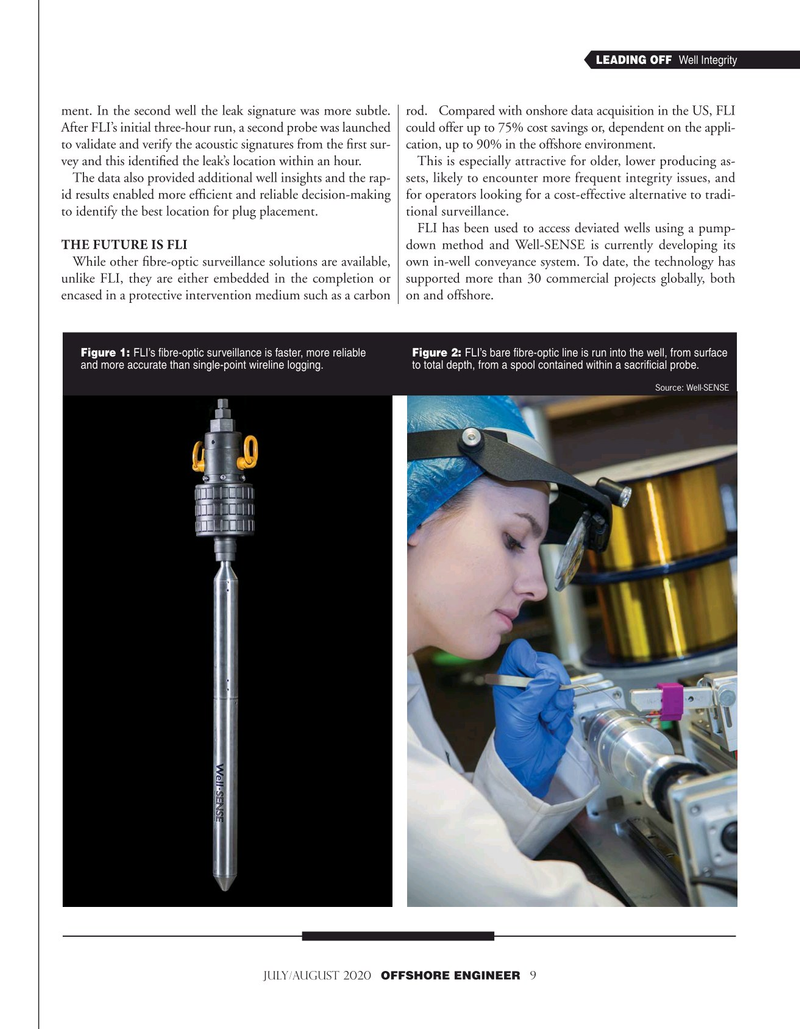
Page 9: of Offshore Engineer Magazine (Jul/Aug 2020)
Read this page in Pdf, Flash or Html5 edition of Jul/Aug 2020 Offshore Engineer Magazine
LEADING OFF Well Integrity ment. In the second well the leak signature was more subtle. rod. Compared with onshore data acquisition in the US, FLI
After FLI’s initial three-hour run, a second probe was launched could offer up to 75% cost savings or, dependent on the appli- to validate and verify the acoustic signatures from the ?rst sur- cation, up to 90% in the offshore environment. vey and this identi?ed the leak’s location within an hour. This is especially attractive for older, lower producing as-
The data also provided additional well insights and the rap- sets, likely to encounter more frequent integrity issues, and id results enabled more ef?cient and reliable decision-making for operators looking for a cost-effective alternative to tradi- to identify the best location for plug placement. tional surveillance.
FLI has been used to access deviated wells using a pump-
THE FUTURE IS FLI down method and Well-SENSE is currently developing its
While other ?bre-optic surveillance solutions are available, own in-well conveyance system. To date, the technology has unlike FLI, they are either embedded in the completion or supported more than 30 commercial projects globally, both encased in a protective intervention medium such as a carbon on and offshore.
Figure 1: FLI’s ?bre-optic surveillance is faster, more reliable Figure 2: FLI’s bare ?bre-optic line is run into the well, from surface and more accurate than single-point wireline logging. to total depth, from a spool contained within a sacri?cial probe.
Source: Well-SENSE
JULY/AUGUST 2020 OFFSHORE ENGINEER 9

 8
8

 10
10